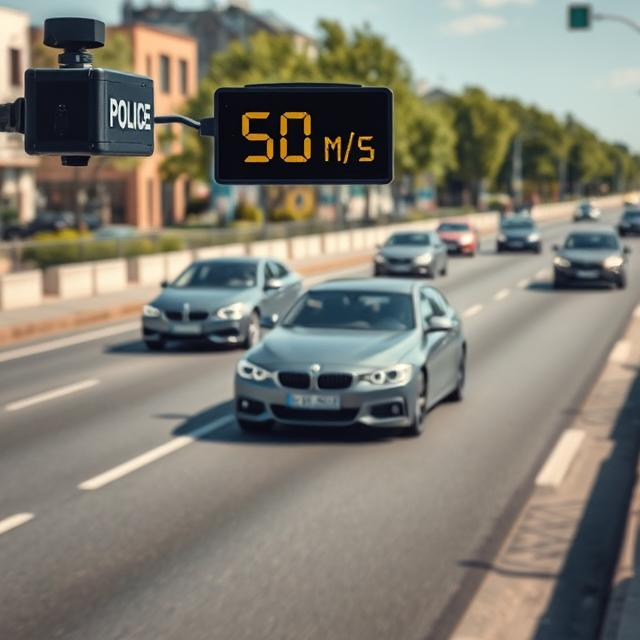Car speed detection technology has a significant impact on road safety and traffic management. These systems measure vehicle speeds helping police, transport agencies, and car makers to make better decisions to improve driving conditions. In this blog, we’ll look at the main technologies behind car speed detection and how they’re used to make our roads safer.
What is Car Speed Detection Technology?
Car speed detection technology includes various systems and methods to measure how fast vehicles are moving on the road. The two most common technologies used are radar and lidar, which work to give accurate speed measurements.
Let’s examine how these systems work.
Radar-Based Speed Detection
Radar (Radio Detection and Ranging) has a significant impact on speed detection methods in traffic law enforcement. Here’s how it works:
- Emission of radio waves: The radar device sends out radio waves towards a moving vehicle.
- Doppler effect: The vehicle’s movement changes the frequency of the reflected radio waves because of the Doppler effect. The vehicle’s speed relates to the size of the frequency change.
- Speed calculation: The radar system figures out the vehicle’s speed by looking at this frequency change. This leads to accurate results.
Radar-based systems are dependable and easy to set up for many traffic monitoring uses, which is why law enforcement agencies often turn to this technology.
Lidar-Based Speed Detection
Lidar (Light Detection and Ranging) offers a more accurate and thorough way to detect speed. Unlike radar, lidar relies on laser pulses to measure speed. Here’s how it works:
- Emission of laser pulses: The lidar device shoots quick bursts of laser light at the target vehicle.
- Measuring return time: The system tracks how long it takes for the light to bounce back after hitting the vehicle.
- Speed calculation: The system figures out the vehicle’s speed by working out the time the laser pulse took to travel to the vehicle and back.
Lidar stands out for its exactness and fine detail in situations where radar systems might have trouble, like in busy traffic or when spotting smaller objects.
Other Speed Detection Methods
Though radar and lidar are the go-to technologies, there are quite a few other ways to detect vehicle speed:
- Camera-based systems: These systems apply video analysis and image processing to keep tabs on vehicle movement. By measuring position changes over time, cameras can figure out a vehicle’s speed. This tech often works alongside speed cameras.
- GPS-based systems: A lot of today’s vehicles and mobile apps use Global Positioning System (GPS) to work out speed. GPS-based systems figure out the distance a vehicle covers in a set time and divide it by that time to estimate speed. These systems come in handy for many things, like managing fleets and helping with navigation.
Uses of Car Speed Detection Technology
Car speed detection technology has more uses than just catching drivers who go too fast—it offers a range of benefits to different industries and makes things safer overall. Here are some of the main ways it’s used:
Vehicle Safety Systems New driver help systems (ADAS) use speed detection to make cars safer. Things like smart cruise control, auto braking, and crash prevention need up-to-the-minute speed data to cut down on accidents and keep drivers and people walking safe.
Traffic Enforcement Speed cameras and radar guns serve as the primary tools to enforce speed limits on highways and in cities. These devices help to prevent crashes by discouraging dangerous driving and making sure cars stay within safe speed ranges.
Intelligent Transportation Systems Up-to-the-minute speed info plays a key role in managing traffic. It allows cities to boost traffic flow, cut down on jams, and improve how routes are planned. By linking speed detection with traffic signals and road signs, officials can ensure smoother trips for drivers.
Autonomous Vehicles Self-driving cars need to measure speed to drive in traffic. These systems use speed info to adapt to road changes, speed rules, and traffic patterns. Getting speed right helps stop crashes and keeps self-driving cars running .
